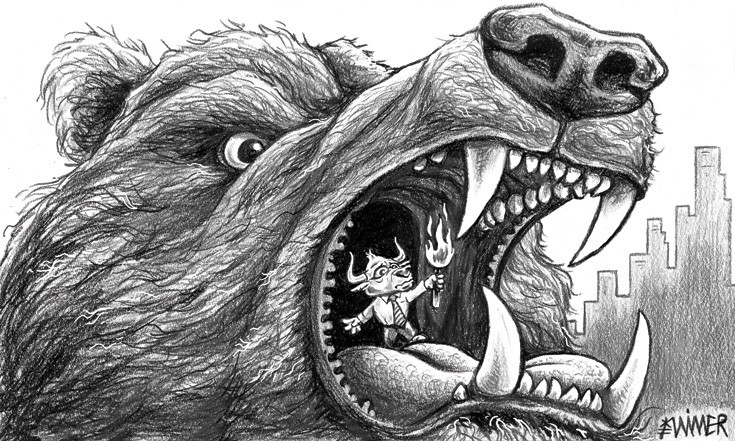Black Swan Events No Longer a Rarity The Finance Professionals Post
Post on: 16 Апрель, 2015 No Comment

The Finance Professionals’ Post educates readers in the finance and banking sectors on the forces that shape their business. The FPP is a publication of the New York Society of Security Analysts (NYSSA).
07/26/2012
Black Swan Events: No Longer a Rarity
Vinny Catalano, president and global investment strategist with Blue Marble Capital Management, is on a mission to heighten investment professionals’ awareness of the impact that black swan events and other hard-to-quantify and predict “big picture” phenomena are likely to have on market behavior in the 21st century. He reports investment analysts need to get comfortable navigating the uncharted waters where the black swan lurks. Catalano will be moderating NYSSA’s upcoming Market Forecast™: Are We There Yet? conference on August 9.
In his seminal volumes, Fooled by Randomness and The Black Swan. Nassim Nicholas Taleb introduced and elaborated upon the black swan theory of the financial markets. His theory was based on the following observations: More, seemingly unpredictable events—once considered rare—were happening with increasing frequency and with extraordinarily high impact on financial markets. Equally troubling, because human psychological biases dispose us to turn a blind eye to uncertainty, we are often ill-prepared when these once rare, unforeseen, but often cataclysmic events occur.
Catalano is concerned that bottom-up investment analysts lack the training to take into account phenomena that cannot be incorporated into today’s Capital Asset Pricing Model (CAPM). “Black swans are not supposed to happen according to modern portfolio theory, or, if they do they happen, once in a century. But now they are happening just about every five years,” says Catalano. CAPM is based upon a normal, bell-shaped distribution curve with normal distributions of risk that don’t reflect the importance of fat tail events that black swans represent. Black swans are happening more often, they are seemingly coming out of nowhere from unexpected places, and metastasizing virally unlike anything we have heretofore witnessed, Catalano reports.
Troubling systemic changes that have occurred in the financial markets are compounding their impacts. “This is not your grandfather’s laissez faire economy,” says Catalano. “Technology and globalization have brought about a new economic order and we are now in a leaderless world economy.” Black swans may begin in a small segment of the system but quickly erupt into global events, cutting across themes and creating correlations in market segments where none previously existed. The black swan of 2008, for example, originated in the US real estate and subprime markets, and quickly spread.
Most disturbing, says Catalano, is that the inadequate financial reforms in response to the 2008 crisis have left the world even more vulnerable to the black swan effect. “In the last three decades, financial engineers have created ever more complex products and processes,” he reports. “At the same time, 85 percent of market volume is now concentrated in hedge funds and high frequency traders. Indicators that we used to depend on, like trading volume, become useless in this context,” he notes. Greater financial instrument complexity, the concentration of trading, and the rise of too-big-to-fail banks has created a toxic cocktail that will make the next black swan event even more impactful, Catalano warns.
“What happens if we get entrenched in another down cycle while we are in our current near-zero interest rate environment, where do we go from there?” Catalano asks. “We will be in a valley so deep that we may not be able to extricate ourselves.” Moreover, Catalano reminds us, past history has demonstrated that this kind of global economic instability creates fertile ground for the rise of authoritarianism and dictatorships.
Rising above the dark side of this forecast, it is possible to prepare for the next black swan, says Catalano. Our best defense begins with awareness. Although we cannot predict them, we can get a better understanding of black swans through close study and by recognizing, for example, that they have often emerged in the past out of pockets of perceived market strength.
Catalano also recommends focusing on risk mitigation strategies and investing in longer-term value, including global consumer staples and infrastructure assets. The emerging black swan era also affords investment advisors an opportunity to help their clients understand the principles of behavioral finance that play into market responses to these events. “We all know that behavioral finance matters and is an influencing factor in investment decision making and therefore in how markets behave,” he reports. But like black swan events, the lessons of behavioral finance will continue to be difficult to incorporate into the evolving CAPM. Welcome to the new world of hard-to-quantify market uncertainty, says Catalano.
COMING THIS FALL
Vinny Catalano will be leading a NYSSA discussion series this fall to stimulate further thought and catalyze professional collaboration around the black swan, behavioral finance, and other “big picture,” hard-to-quantify market phenomena. Look for more information on NYSSA’s website in the coming months.
—Susan Arterian Chang
Susan Arterian Chang is a contributing writer to the Finance Professionals’ Post and the director of Capital Institute’s Field Guide to Investing in a Resilient Economy project .














